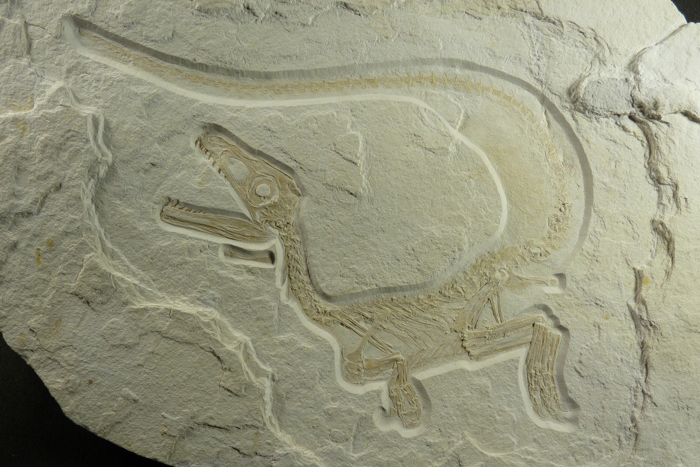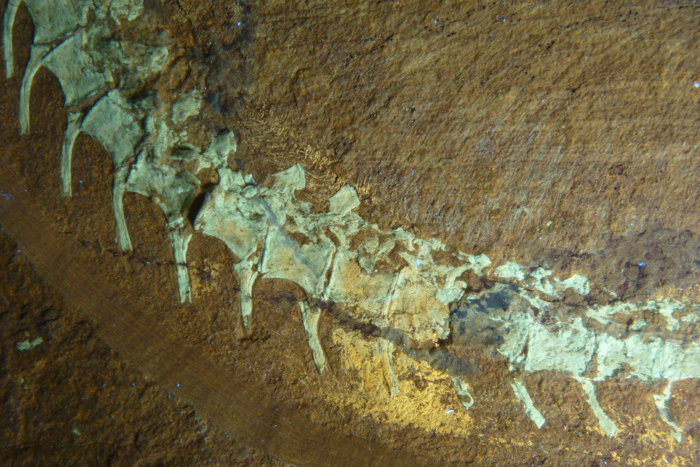All Predatory Dinosaurs May Have Sported Fluffy Feathers

Evidence has mounted in recent years that some dinosaurs gained feathers on their way to evolving into birds. But a new study suggests feathered dinosaurs were more prevalent.
The 150-million-year-old fossil of the predatory dinosaur Sciurumimus albersdoerferi is the first evidence of feathered theropod dinosaurs that were not closely related to birds.
"All of the feathered predatory dinosaurs known so far represent close relatives of birds," said study team member Oliver Rauhut, of the Bayerische Staatssammlung für Paläontologie und Geologie. "Sciurumimus is much more basal within the dinosaur family tree and thus indicates that all predatory dinosaurs had feathers."
Theropods were bipedal — walking on their hind legs. Most were carnivores. Many theropods are known to have had feathers, but none so far down at the base of the theropod's evolutionary tree.
The fossil, of a baby Sciurumimus, was found in Bavaria. Remains of a filamentous plumage were preserved, indicating that the whole body was covered with feathers, the researchers said in a statement. (The slender dinosaur also had a baby face, the researchers noted, with its eyes proportionately much larger than those of adults.)
"Under ultraviolet light, remains of the skin and feathers show up as luminous patches around the skeleton," said study co-author Helmut Tischlinger, from the Jura Museum Eichstatt.
"This is a surprising find from the cradle of feathered dinosaur work, the very formation where the first feathered dinosaur Archaeopteryx was collected over 150 years ago," said study team member Mark Norell, chair of the Division of Palaeontology at the American Museum of Natural History.
Get the world’s most fascinating discoveries delivered straight to your inbox.
The discovery is detailed this week in the Proceedings of the National Academy of Sciences.




